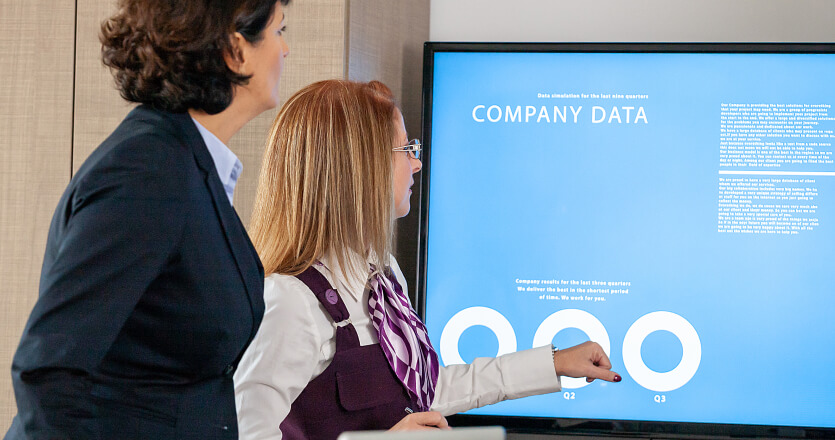Traditional methods often fail to capture the audience’s attention in the dynamic world of presentations, lectures, and interactive learning experiences. This is where interactive displays come into play, revolutionizing how we communicate and engage with our audiences.
What are interactive displays?
Interactive displays are cutting-edge technological tools that blend hardware and software to create engaging user experiences. Unlike traditional displays, these interactive marvels respond to touch, gestures, or stylus inputs, allowing users to participate and actively manipulate digital content in real-time. Whether used in classrooms, boardrooms, or public spaces, an interactive display offers a more intuitive and collaborative approach to communication.
These displays typically comprise a high-resolution screen, touchscreen technology, and powerful computing capabilities. They can vary in size, from compact interactive whiteboards to expansive video walls catering to different needs and spaces.
Yodeck easily adapts to the diverse array of sizes and configurations, ensuring optimal performance across all types of displays mentioned.
The cost of interactivity
While the benefits of interactive displays are clear, the cost considerations might initially seem daunting. However, the prices have significantly decreased over the years, making these technologies more accessible to a broader range of users. The cost of an interactive display depends on factors such as size, resolution, touchscreen technology, and additional features.
For instance, a basic interactive whiteboard might start at a few hundred dollars, while more advanced and larger displays can range from a few thousand to tens of thousands of dollars. Viewing this as an investment in enhancing communication and engagement is essential, potentially yielding long-term benefits in education, business, and other sectors.

Unleashing the possibilities
The true magic of interactive digital signage lies in its diverse applications to captivate and educate audiences. Here are some ways you can leverage interactive displays to elevate your presentations:
1. Interactive learning in education
Interactive displays have revolutionized the way educators engage with students. From interactive lessons, gamification elements, and collaborative projects to virtual field trips, these displays make learning more dynamic and enjoyable. Students can directly interact with content, fostering a hands-on learning experience that enhances retention and understanding.
2. Dynamic business presentations
In the corporate world, interactive digital signage redefines the meeting room experience. Presenters can seamlessly navigate through presentations, annotate on the fly, and encourage audience participation. This not only enhances communication but also facilitates brainstorming sessions and decision-making processes.
3. Immersive exhibits and public spaces
Museums, galleries, and public spaces can utilize interactive displays and interactive kiosks to create immersive exhibits. Visitors can interact with information, images, and videos, enhancing their overall experience. These displays also provide a valuable tool for information dissemination and storytelling.
4. Collaborative work environments
Interactive displays foster collaboration in the workplace by enabling teams to brainstorm, ideate, and problem-solve in real-time. With features like screen sharing and remote collaboration, teams can seamlessly work together, regardless of physical location.
5. Entertaining games and quizzes
Transform waiting areas into entertainment zones by incorporating interactive games, quizzes and interactive kiosks. This not only keeps your audience engaged but also adds an element of fun to their experience.
6. Customer surveys and feedback
Gather valuable insights by incorporating interactive surveys and feedback forms. Encourage customers to share their opinions, helping you tailor your products and services to meet their needs.
7. Interactive wayfinding
Interactive displays can be wayfinding tools in large spaces such as malls, airports, or educational campuses. Users can input their destination; the display will guide them with interactive maps and directions.

The Yodeck advantage
Yodeck is a cloud-based digital signage platform that takes digital signage lies to the next level. With Yodeck, businesses can effortlessly manage and customize their content, creating a personalized and engaging experience for their audience. One of the key advantages of Yodeck is its user-friendly interface, making it accessible to businesses of all sizes.
Conclusion
Interactive displays have evolved from novel technologies to indispensable tools in various sectors. As the cost of these displays continues to decrease, their adoption becomes more widespread, unlocking new possibilities for engaging and captivating audiences. Whether you are an educator, a business professional, or a curator, integrating interactive displays into your toolkit can transform your communication, leaving a lasting impression on your audience. Embrace the magic of interactivity and elevate your presentations to new heights.
